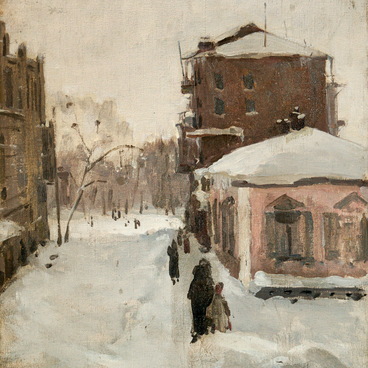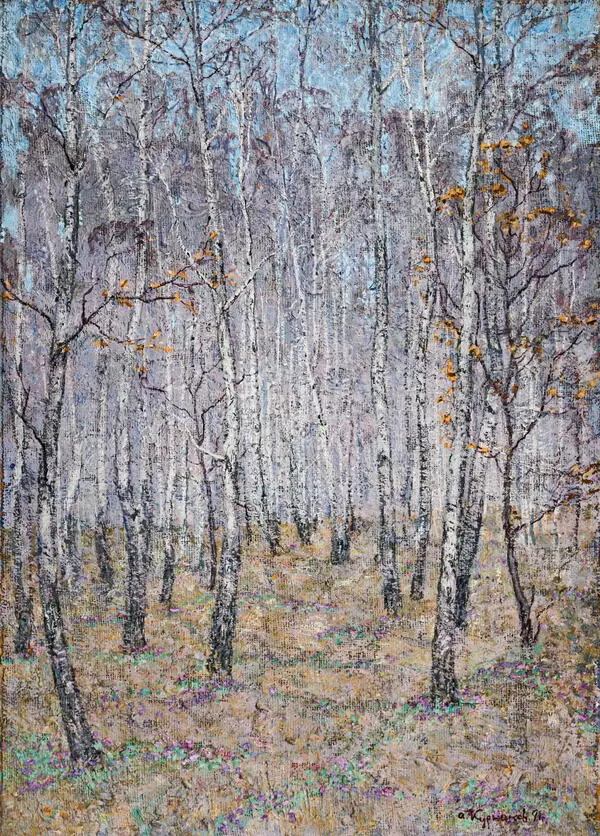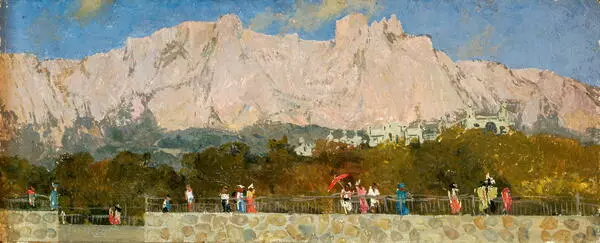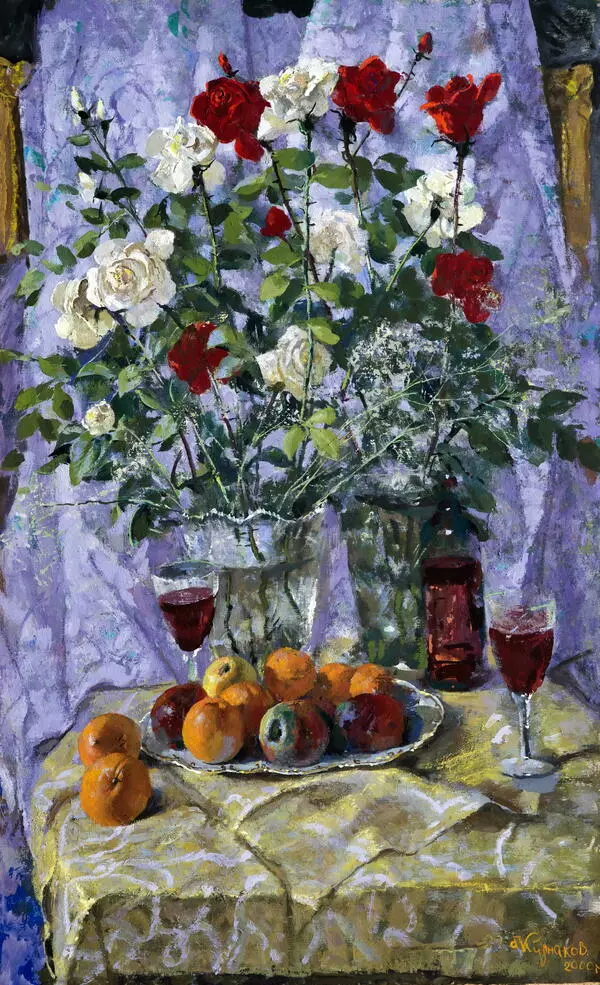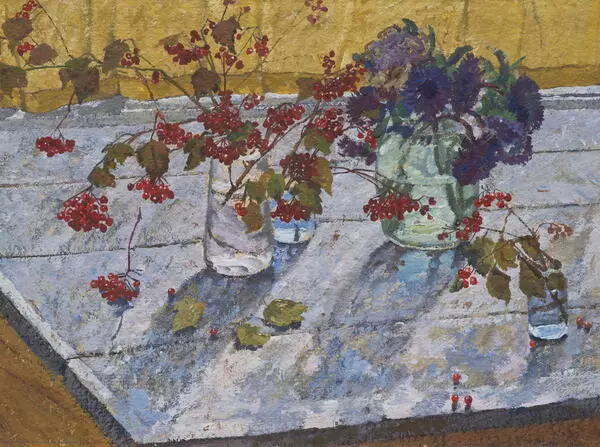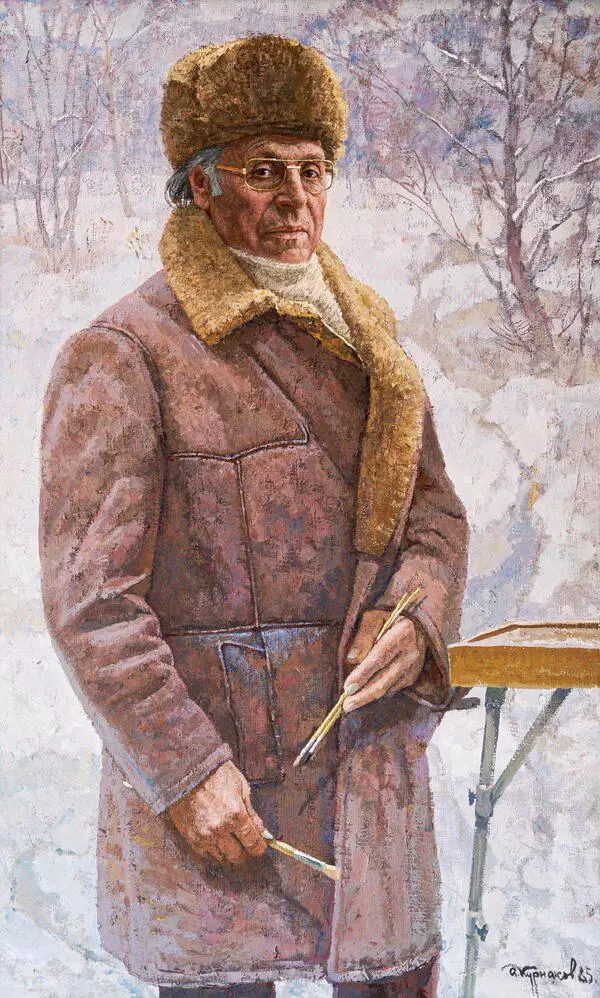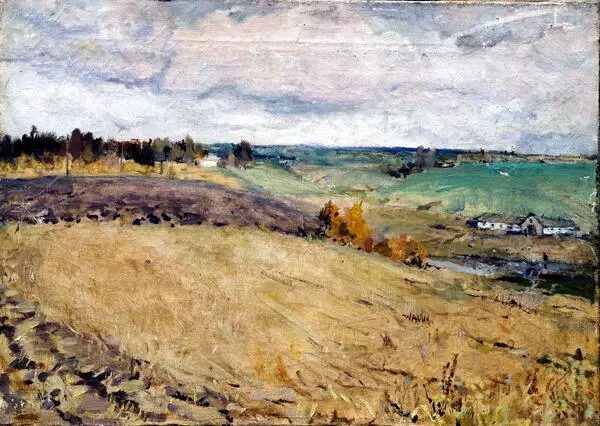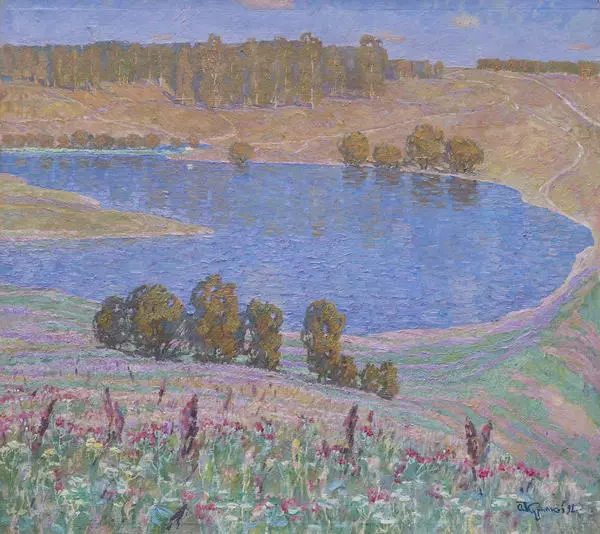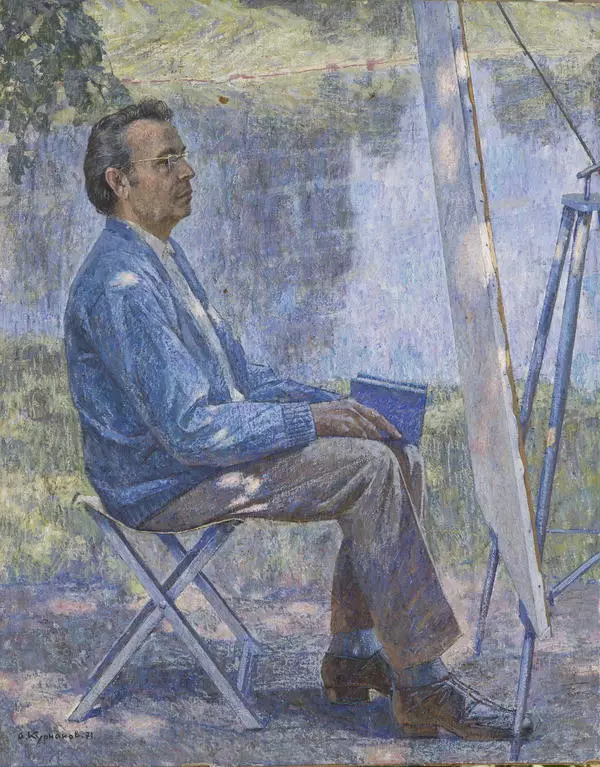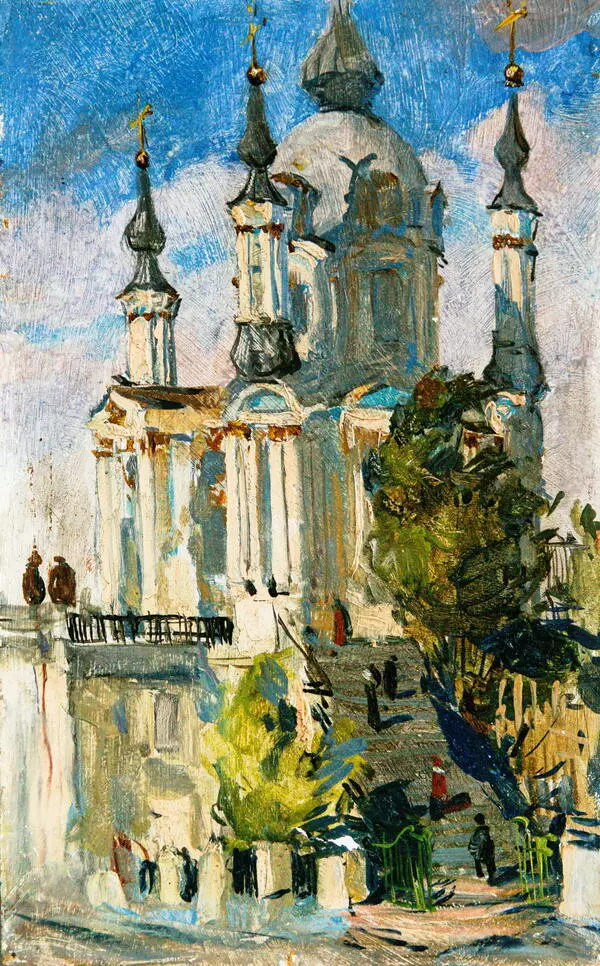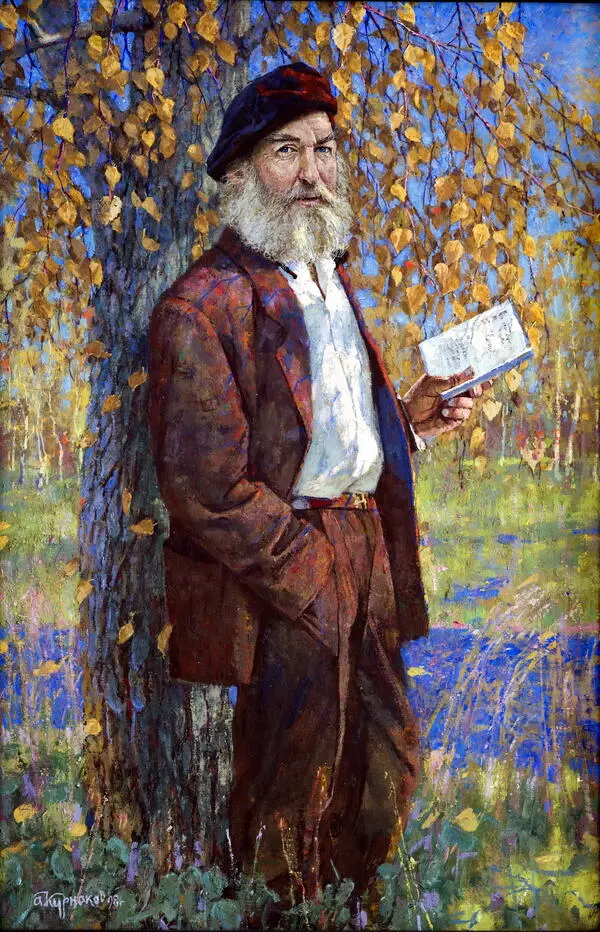Among the picturesque hills of Novgorod Oblast, on the shores of the beautiful Lake Valdai, there are small villages. Fortunately, they have retained their original look even with the modern urban surroundings, so they are a genuine example of the landscape architecture of central Russia. These villages are fascinating for their uniqueness and authenticity, the very idea of choosing such a place for living seems like some sacred rite, and the izbas bring peace, tranquility, and harmony to the image.
Here everything is closely connected with nature. Log cabins were made of spruce, and birch was used for kitchen utensils. Clothing and household items were made from linen and adorned with decorative stitching and embroidery. Houses were usually adjoined by a log sauna and outbuildings. A yard was used for keeping cattle and poultry, as well as for storing crops. The modest beauty of Russian rural nature is reflected in Andrey Kurnakov’s landscape titled “Evening in a Village Near Valdai”.
The artist captured that fleeting moment of a passing day when the last rays of the sun fade immersing nature into a slumberous state of twilight. The composition and light in the canvas are focused on a woman sitting on the porch, wearing a red skirt and a bright yellow scarf that covers her head and shoulders. Next to her is the wall with a high window, illuminated by the last ray of the setting sun.
The foreground depicts a courtyard overgrown with green grass with small portions of yellow in it — a sight that is often present in Andrey Kurnakov’s landscapes. The artist outlines the trodden paths leading to the house and outbuildings. On the left is a massive log wall of the hut with a high roof made of long shingles, as well as some silhouettes of poultry.
The background shows the darkening low sky of bluish-lilac shades. The clouds are slightly touched by the pink light of the setting sun; the hazy moon hangs low over the horizon. The vivid color palette of the painting consists of cold purple hues. The painter chooses the impasto technique and therefore uses a painting knife — a special artist’s tool that flattens uneven strokes, removes excessive paint and adds texture and volume to the image.
Here everything is closely connected with nature. Log cabins were made of spruce, and birch was used for kitchen utensils. Clothing and household items were made from linen and adorned with decorative stitching and embroidery. Houses were usually adjoined by a log sauna and outbuildings. A yard was used for keeping cattle and poultry, as well as for storing crops. The modest beauty of Russian rural nature is reflected in Andrey Kurnakov’s landscape titled “Evening in a Village Near Valdai”.
The artist captured that fleeting moment of a passing day when the last rays of the sun fade immersing nature into a slumberous state of twilight. The composition and light in the canvas are focused on a woman sitting on the porch, wearing a red skirt and a bright yellow scarf that covers her head and shoulders. Next to her is the wall with a high window, illuminated by the last ray of the setting sun.
The foreground depicts a courtyard overgrown with green grass with small portions of yellow in it — a sight that is often present in Andrey Kurnakov’s landscapes. The artist outlines the trodden paths leading to the house and outbuildings. On the left is a massive log wall of the hut with a high roof made of long shingles, as well as some silhouettes of poultry.
The background shows the darkening low sky of bluish-lilac shades. The clouds are slightly touched by the pink light of the setting sun; the hazy moon hangs low over the horizon. The vivid color palette of the painting consists of cold purple hues. The painter chooses the impasto technique and therefore uses a painting knife — a special artist’s tool that flattens uneven strokes, removes excessive paint and adds texture and volume to the image.

